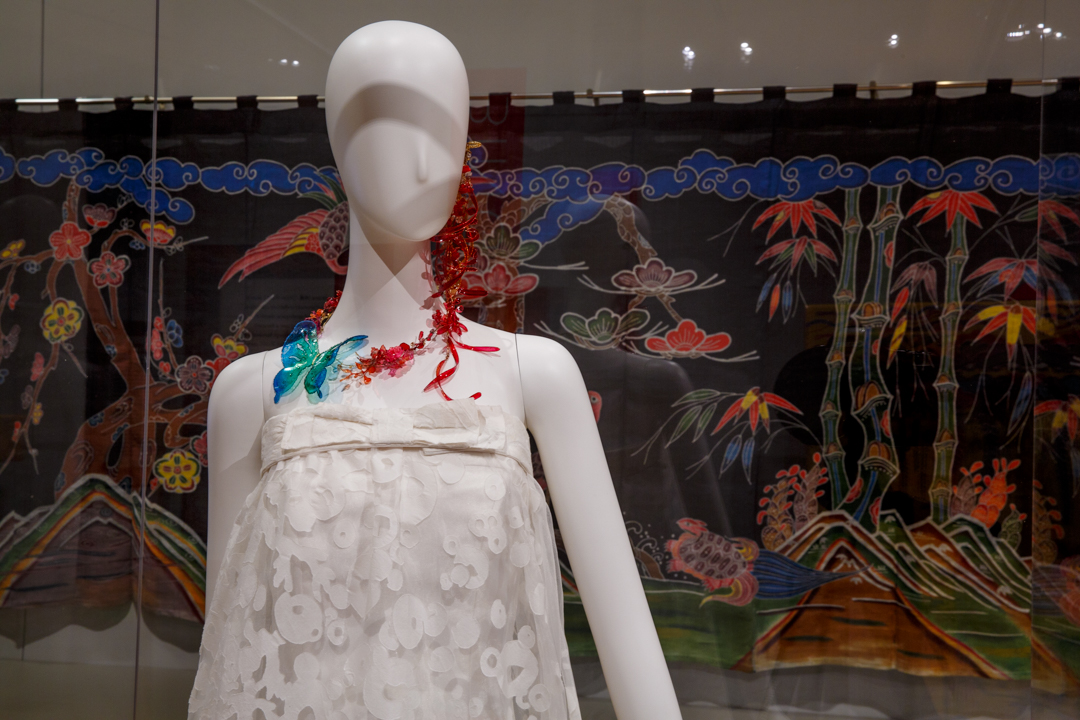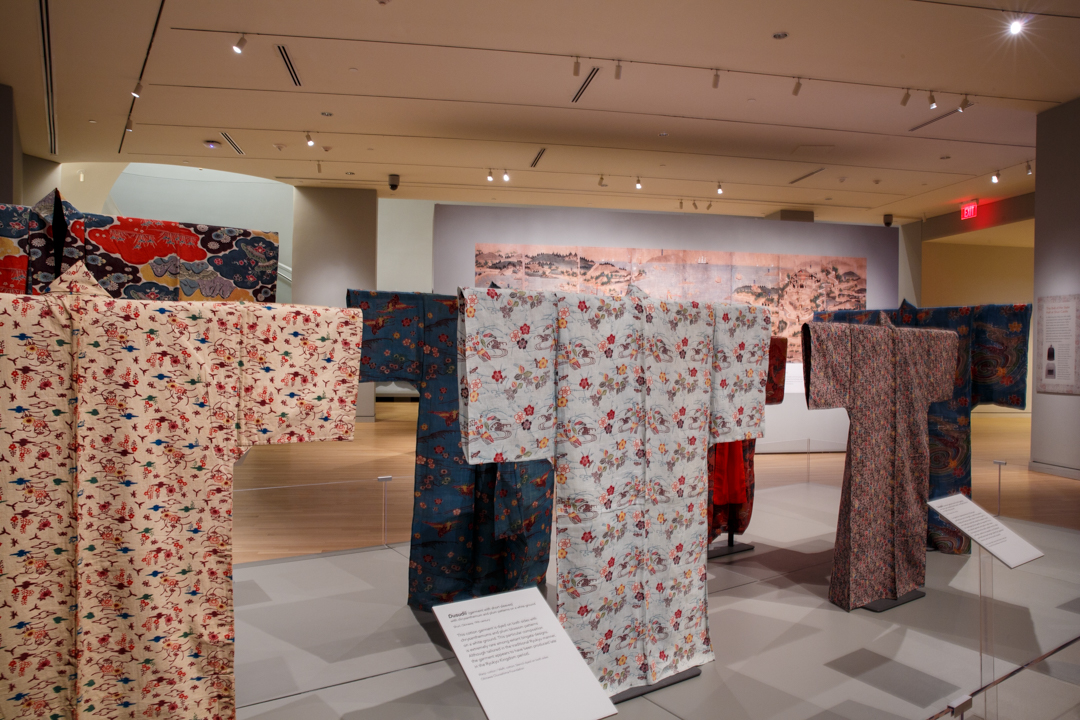By Menachem Wecker
Scholars have long recognized the unique quality of brightly colored fabrics produced in the Ryukyu Kingdom—present-day Okinawa—between the 17th and 19th centuries. But a dearth of surviving works, called bingata, at U.S. museums has made them tough to study.
“A museum might have one or two pieces,” said Lee Talbot, curator of Eastern Hemisphere textiles at the George Washington University Museum and The Textile Museum. “A lot of people aren’t aware of it.”
Mr. Talbot had just concluded that the cost of bringing together enough dispersed bingata to make a show was prohibitive when he heard from a representative of the Okinawan Prefectural Government, who wondered if the museum would collaborate on an exhibit.
“I said ‘yes’ immediately,” Mr. Talbot says. “They said, ‘Don’t you need to think about it?’”
He did not, and the resulting exhibition, “Bingata! Only in Okinawa,” draws together about 100 works from private and public collections. It represents, Mr. Talbot said, the first U.S. museum exhibition to focus specifically on this “extremely time-consuming” technique, which involved affixing rice paste to and using paper stencils on fabric to print bright colors. The exhibit runs through Jan. 30, 2017.
Many of the works—only 50 of which will be shown at once due to their fragility—come from the Naha City Museum of History, Okinawa Churashima Foundation and Okinawa Prefectural Museum and Art Museum and have not traveled previously. While researching the show on a trip to Okinawa, Mr. Talbot even found the stencils used to make one of the bingata works in The Textile Museum’s collections. A wall label reproduces a photo of that stencil.
“This is a really special opportunity for American audiences to see this material,” Mr. Talbot says. “This offers a window into Okinawan history and culture.”
The earliest works in the exhibition, which are 18th century, could only be worn, by law, by aristocrats. Only three families, all nobility, could make bingata, and the garments were gendered. “This is only for women,” Mr. Talbot says. “Men don’t wear bingata.” One exception was during certain dances, where men might wear the clothing.
The Ryukyu Kingdom, then a major maritime trading center, interacted regularly with China, from which it developed the custom of reserving yellow coloring for royalty. In certain religious contexts, Ryukyu women would wear simpler clothing than the bingata. Reaching for a metaphor, Mr. Talbot compared bingata to cocktail attire, rather than more formal dress.
Many highly prized bingata garments, which would often be repurposed and tailored rather than discarded because they were so valuable, were destroyed during Okinawa’s violent history. And the climate didn’t help either. “Textiles don’t survive anyway,” Mr. Talbot says. “Especially somewhere hot and humid like Okinawa.”

Among the works in the exhibit are bingata for children, which were cut from adults’ garments, perhaps ones that had fallen into disrepair. Up until a certain age, young boys could wear bingata as well, Mr. Talbot says.
Not only would the bright colors signify economic status, but the patterning would as well. “The bigger the pattern the higher your rank,” Mr. Talbot says.
Women had very special roles in the Ryukyu Kingdom, including serving as priestesses, and certain sacred groves would have been completely off-limits to men. As a sign of coming of age, women’s hands would be tattooed, and the priestesses would have worn plain, white clothes. One of the king’s sisters, however, would be appointed the highest priestess, and she would have worn more colorful attire.
“She was a seer,” Mr. Talbot says. “She could very much guide policy. The king’s sister, at times, could be more powerful than the king.”
After Japan annexed Ryukyu in 1879 and formed Okinawa Prefecture, however, power changed significantly. The monarchy was dismantled, as were the laws governing bingata. Still, it took a while for commoners to don bingata. A winter garment in the exhibition would have belonged to a commoner, who maintained muted tones on the outside, and only added the bright colors on the inside lining.
“The lower classes just didn’t dare,” Mr. Talbot says. “This would have been worn by a very wealthy commoner. She’s not showing off.”
More recent works in the show demonstrate the great evolution of bingata. A piece from the 1950s is made out of a sack of American flour, and the logo “Baker’s” can still be made out. Okinawans scavenged for whatever materials they could after the war, according to Mr. Talbot.
“For color, they’d use melted crayon or lipstick,” he said. “Bingata becomes more of a symbol of Okinawa than just the aristocracy.”
A 2002 work includes illustrations of American planes and paratroopers. Nearly a quarter of Okinawa’s main island is taken up today by U.S. Army bases, according to Mr. Talbot.
“When you’re in Okinawa, you’re constantly aware of this because of the air traffic,” he says.
Friday evening, the museum hosted an opening reception on University Yard in advance of the exhibit’s opening. Guests included the Japanese ambassador to the United States, the director general of Okinawa's culture, tourism and sports department, a bingata artist, as well as university staff and supporters. The event also featured Okinawan cuisine and dance performances. On Saturday at Jack Morton Auditorium, the museum hosted a symposium titled "Only in Okinawa: Textiles and Traditions of the Ryukyu Kingdom." It featured five scholars from Okinawa—folklorists, curators and historians of textiles and theater—who provided a broader context for Okinawa’s celebrated textile art.



